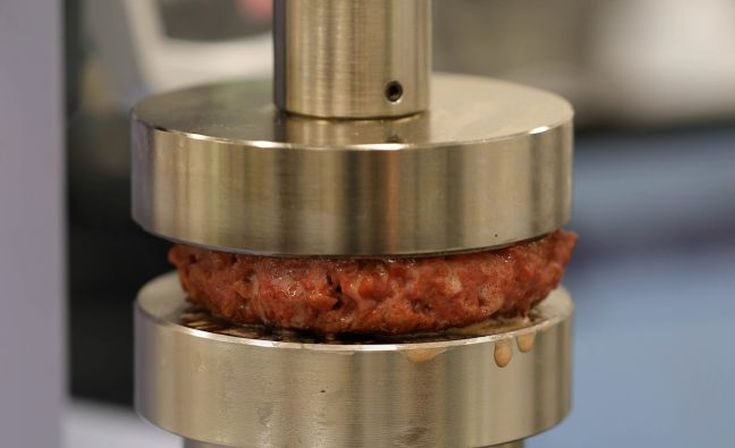In July 2019, Beyond Meat shares were trading at $234. This week they’re worth just over $6, giving the beleaguered company a market cap of $408 million. Sales continue to decline, gross margins are in negative territory, and the company has debts of $1.1 billion thanks to an offering of convertible notes made in 2021 that will mature in early 2027.
According to a filing from Beyond Meat in 2021, the notes need to be paid in cash up to the issuance amount, notes Brian Ruszczyk at alt protein investor Earth First Food Ventures. “The converts, while they mature in 2027, are redeemable by noteholders at investor discretion in December 2026 and need to be paid in cash up to the issuance amount ($1 billion).
“Beyond Meat needs to come up with lots of capital to repay the noteholders by Dec. 2026. We can’t see that happening in this current environment for a company whose business is going backward… and certainly not to the tune of $1 billion with a $408 million market cap. They took out this debt when the company had a market cap of $12 billion and it probably made sense back then. Today it does not.”
AgFunderNews (AFN) caught up with John Baumgartner (JB), managing director at Mizuho Securities, to get his take on what happens next.
AFN: Is Beyond Meat going to run out of money?
JB: Anything they’re going to do is going to be really dilutive to equity holders. They probably have enough cash [$233 million as of Sept 30] to get them through 2024 into 2025. And there’s probably more cost they can cut if they need to preserve that cash a little bit longer. So for the foreseeable future, it’s a case of cutting costs, being as judicious as possible with your expenses, and hoping for revenue to grow.
But when it comes to the billion-dollar debt, this convertible [senior notes] deal [struck in 2021], at some point, you’d think they’re going to have to renegotiate that, because if they’re going to try and raise a billion dollars in capital in advance of that, to pay that off at maturity [by March 2027], I just don’t think they will be able to work with it.
If you think about what the interest expense would be on a $1.2 billion issuance, that’s a massive fixed cost they’re going to put on the business with cash right at the time that they are trying to become cash-positive.
They can maybe rework some of the terms of the convert, maybe adjust the conversion price, and start paying a little bit of interest to people, but it’s really hard to get a sense of what’s going to happen.
AFN: How does the company turn things around?
JB: Marketing campaigns [‘There’s Goodness Here’ and ‘This Changes Everything’] focused on ingredients transparency and the nutritional benefits of plant-based meat are steps in the right direction, but if you’re trying to change food culture, and get more people eating plant-based, you can’t make that happen overnight with a marketing campaign. It will require consistent spending at a time when Beyond Meat is seeking to reduce expenses to stem the cash burn.
AFN: How is Impossible Foods performing?
JB: If Impossible Foods was doing that poorly at Burger King, it probably wouldn’t still be available, so it’s probably doing just enough to justify its inclusion on the menu, but not going gangbusters.
In retail, Impossible’s 52-week volumes are up 0.5%, but its four-week volumes are down 12%, and the 12-week volumes are down 14%, as it’s now lapping the distribution gains from the year-ago period.
AFN: What do you see in the US plant-based meat category at retail?
JB: If you look at the US retail data in Nielsen measured channels, pretty much everyone’s struggling, for the last month through October 7, category volumes are down about 12%, Gardein is down 20%, Impossible is down 12%, Beyond Meat is down closer to 5%.
Category volume has declined year-over-year for 33 consecutive quads through September 9, 2023, and including the latest 12 weeks at -13%. Pressure has occurred despite softer price increases (+3- 5%) vs. most food categories and, in response, shelf allocation is contracting. Year-to-date plant-based meat total distribution points are down 9% year over year and the average number of items is down 7%.
We’ve just reduced our 10-year outlook for US plant-based meat category sales to $7.6 billion from $9.4 billion [in 2032], and assume plant-based meat captures a smaller share of the meat market, at 2.5% vs. prior 3% [volume share].
That said, I think we’re actually in a situation now where the pendulum swung too far and it’s just this despair, when there’s actually a lot going on out there in terms of new technologies and if you fast-forward five to 10 years, this category may look very different, with better nutritional profiles, taste and texture.
For the meat alternatives category overall, my sense is that it can probably get back to growth in the back half of next year [as the comparatives look more favorable].
But we do not expect material improvement in consumption for Beyond Meat or the category given macro pressures and lackluster innovation likely prevailing through 2024. First, plant-based meat remains priced at a big premium to traditional beef (30-50% per lb.) and, in a tight economic environment, consumers are reluctant to sample new and premium products. When I look at this category as a consumer, it’s also hard to get excited about commodity products like ground beef and sausages.
AFN: What do you see in the US plant-based meat category in foodservice?
JB: In foodservice, I’m just trying to envision somebody who has a health focus going to a QSR asking for a plant-based burger, super-sized fries and a large Coke. For these [plant-based meat] products, the more natural sort of channels are places like Chipotle, and they won’t take them because they say they’re too processed. But they don’t really work as fine dining opportunities, so they’re just sort of stuck.
As QSRs are likely to focus on categories with broad consumer appeal amid a tough macro market, conditions are also unhelpful for new distribution gains for Beyond Meat [although it has just struck a deal with Pizza Hut in the UK].
AFN: You recently conducted a consumer survey?
JB: Our recent consumer survey [of 1,115 US adults] indicates that 30-45% of consumers having tried Beyond Meat have not liked the product and, among consumers not having liked the product, 30-50% do not plan to try it again. The 18- to 29-year-old cohort is at the high end of this range. Considering this, we believe the incremental contribution of forthcoming burger version 4.0 is likely to prove limited.
AFN: Do you feel more positive about plant-based dairy?
JB: Since the Beyond Meat IPO [in 2019], we have been highly skeptical of market forecasts for total addressable market and consumption. I think there was a general sort of laziness in the investing community [in assuming that plant-based meat would capture a similar share to plant-based milk]. There’s no equivalent of lactose intolerance driving plant-based meat sales. There are also multiple consumption occasions for plant-based beverages, which you might use two or three times a day. But you won’t have a burger that often.
Further reading:




